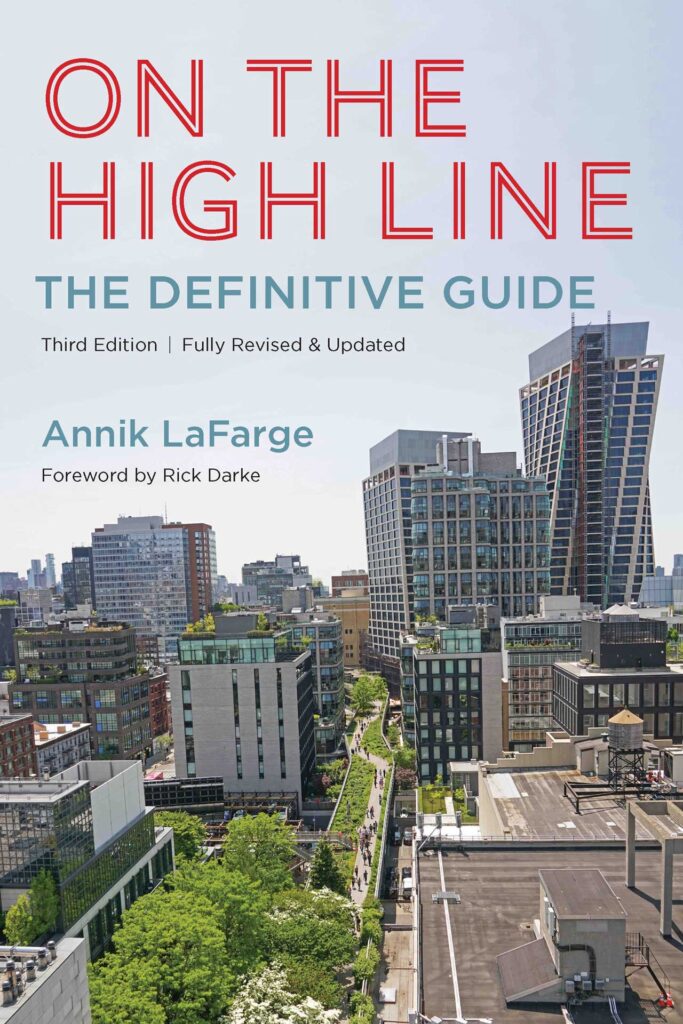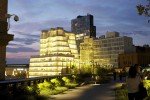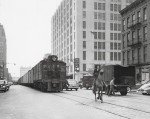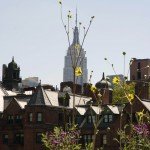by Annik LaFarge
on April 15, 2013
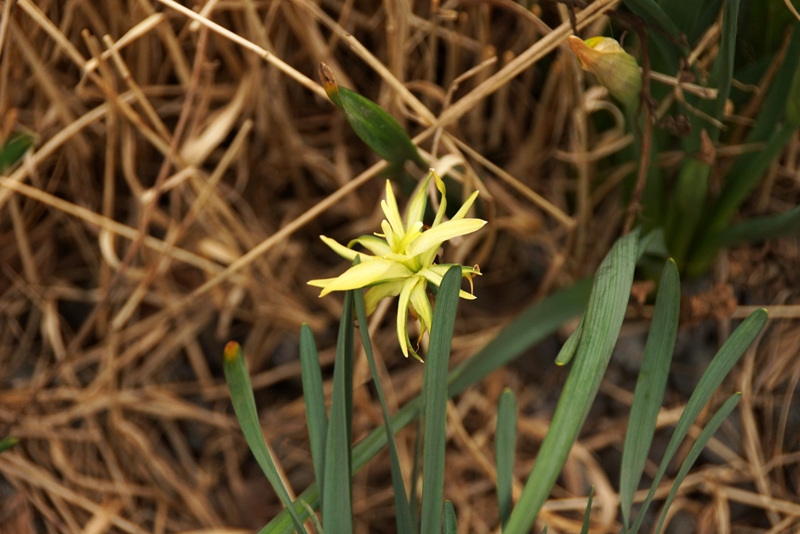
The One and Only Rip Van Winkle
If you go to the High Line today you have the chance to see the one-and-only Narcissus ‘Rip Van Winkle’ flourishing in the Chelsea Grasslands. Yes, there are tons of daffodils up there now, but just one outlier: this lovely star-shaped flower which came uninvited to the High Line. It’s not exactly an illegal immigrant, but it has no papers; when the original plant order was placed, this daffodil was not on it. The abundant Narcissus ‘Intrigue,’ pictured alongside Rip in the photo below, was part of the original plant design, and this much-appreciated harbinger of Spring is also strutting its stuff in the Chelsea Grasslands right now.
‘Rip Van Winkle,’ however, was a volunteer. I love this plant because in the fine tradition of the High Line it hitched a ride to get here. After the freight trains stopped running in 1980 the viaduct became a lushly diverse wild garden, filled with plants whose seeds came here from far and wide: the prairies of the Midwest; Europe; Asia; Africa. Many were carried across the ocean and our own country by birds; others hitched a ride on railroad boxcars that eventually rumbled down Tenth Avenue with their loads of vegetables, canned goods, meat, poultry, or the U.S. Mail. The seeds tumbled out and made a home, and by the time photographer Joel Sternfeld arrived to catch the zeitgeist of the abandoned High Line, they had transformed the viaduct into a place of exquisite wild beauty. These earthy visitors created an impromptu garden atop an industrial ruin, inhabited, just like the city in which they found themselves, by a magnificently diverse group of fellow immigrants and uninvited guests.
I wrote about this flower in my book; while I was doing research I spotted it on the plant list but could never find it in the park. I asked one of the gardeners about it, and she explained that a single ‘Rip Van Winkle’ plant snuck into a flat of invited seedlings and made its surprise appearance the year the park opened in 2009. So Friends of the High Line added it to the plant list. It caught my eye not because I’m interested in daffodils but because of its name. This flower takes its name from the sleepy character created by Washington Irving, who, among his other literary flights cofounded the satirical journal Salmagundi, which coined the nickname “Gotham” for New York City. (It also poked fun at then-President Thomas Jefferson, calling him “a huge bladder of wind.”) In his famous satire of New York City, Knickerbocker’s History, Irving wrote about “Sancte Clause,” whose chimney antics were later appropriated by Chelsea author Clement Clarke Moore in “A Visit From St. Nicholas.” It was Moore who donated the land for General Theological Seminary, which sits directly across the street from the spot in the Chelsea Grasslands where Narcissus ‘Rip Van Winkle’ makes its home.
So it all comes full circle. You can read much more about all this history in my book, but it’s a beautiful day, so why not just get off your duff and go now to the High Line and see ‘Rip Van Winkle’ in person. He didn’t show up last year, and this is a tough city for a single, solitary plant, even one with a name so august. Who knows if he’ll be back again next year.
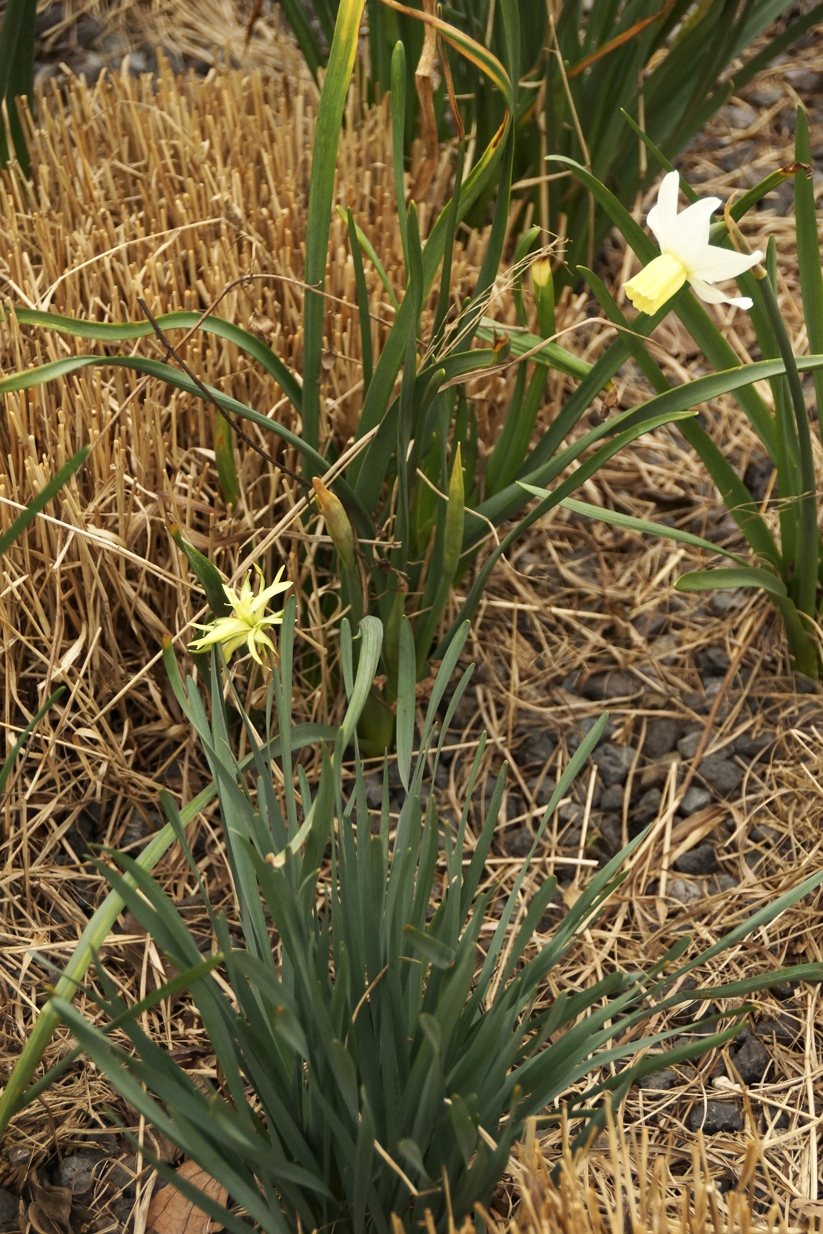
Rip Van Winkle and friends
Tagged as:
gardening staff,
high line plants,
Joel Sternfeld,
Rip Van Winkle
{ }
by Annik LaFarge
on August 16, 2011

I love the (relatively) new billboard on the High Line, which is part of the park’s great public art program. Joel Sternfeld selected Robert Adams’ black & white photograph of a highway in Nebraska, titled “Nebraska State Highway 2, Butte County” and it will remain on the billboard over the giant parking lot on 18th Street until the end of this month.
The High Line’s website explains that Adams made this image in 1978 “as part of a survey to discover how the grand landscapes of the western United States had been shaped, in ways both subtle and dramatic, by human development.” The empty road makes a strong contrast with our own “grand landscape” of Manhattan, towering majestically above Tenth Avenue where an endless stream of taxis, cars, motorcycles, trucks, bicycles, pedicabs, razors, and dudes on skateboards goes rolling by, day and night.
But I noticed something else when I looked at some photographs I took a few weeks ago: you can see the shadows of people walking along the High Line in the photograph. I have no idea if this was intentional, but Sternfeld understands better than anyone the way the sunlight dances on and around this park.
So there we are, walking along Robert Adams’ deserted Nebraska highway: yet another connection the High Line makes for us between the canyons of Manhattan and the prairies of the American west.
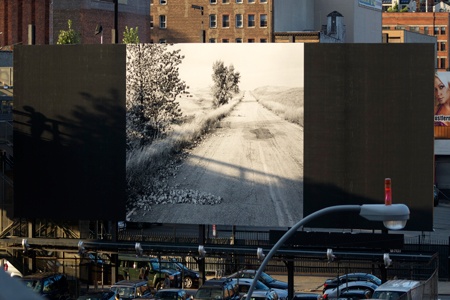
Tagged as:
Art and the High Line,
Joel Sternfeld,
photography,
robert adams
{ }
by Annik LaFarge
on August 4, 2011
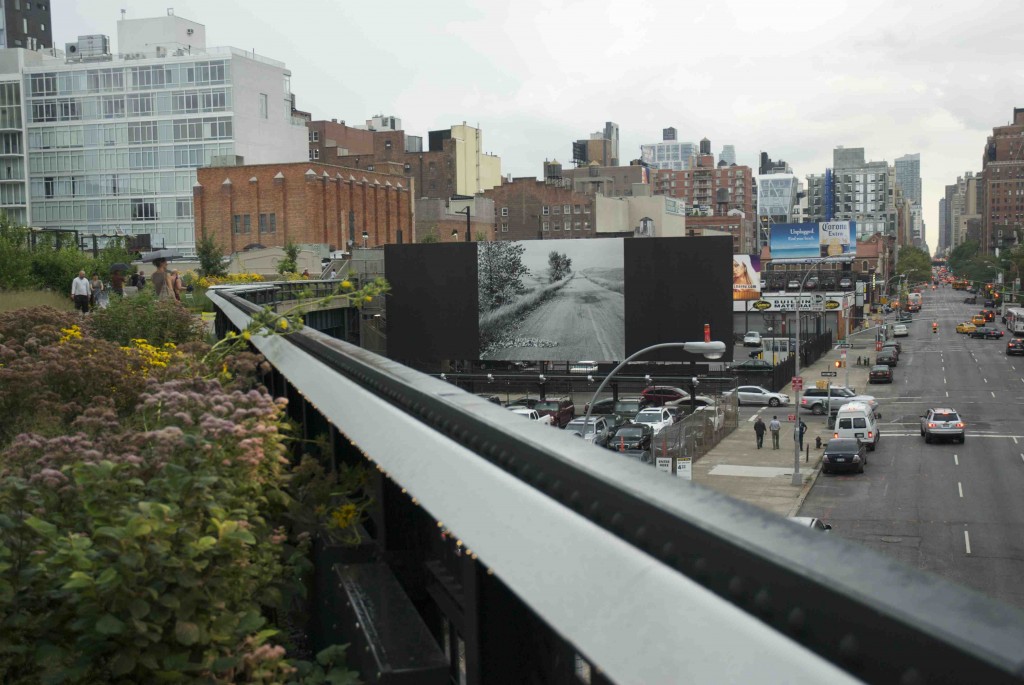
There was a beautiful, Sternfeldian sky above Manhattan this afternoon, and even though I had work to do I grabbed my camera and hit the High Line. There I found the striking Robert Adams billboard that just went up yesterday, which is part of a new outdoor photography exhibit that Joel Sternfeld is curating. You can read about it here, on the High Line’s website. The photo is called Nebraska State Highway 2, Box Butte County, and it conjures the prairie grasses that are in such wonderful abundance now (you can practically smell the cilantro of the prairie dropseed from the street below). It also puts a midwestern highway parallel to Tenth Avenue, which makes sense in a weird way when you consider that “cowboys” rode down these streets beginning in the 1840s.
The High Line is beautiful all the time, but on gray, rainy days, it has a particular magic. Sternfeld told Elizabeth Barlow Rogers, the great New York City conservationist, that he only shot photos on days when the sky was a neutral gray. “I wanted it to be clear in the pictures that if there was glory in the High Line, it wasn’t due to my skill as a photographer. By not borrowing beauty from the sky, the High Line itself is what is important in the picture.” You can read the whole interview here.
So today it was a Sternfeld sky over an Adams photograph. The High Line brings the prairie to Manhattan, and on a rare, rainy, August day, it was a treat to behold.
Tagged as:
Art and the High Line,
Elizabeth Barlow Rogers,
Joel Sternfeld,
robert adams,
weather
{ }







